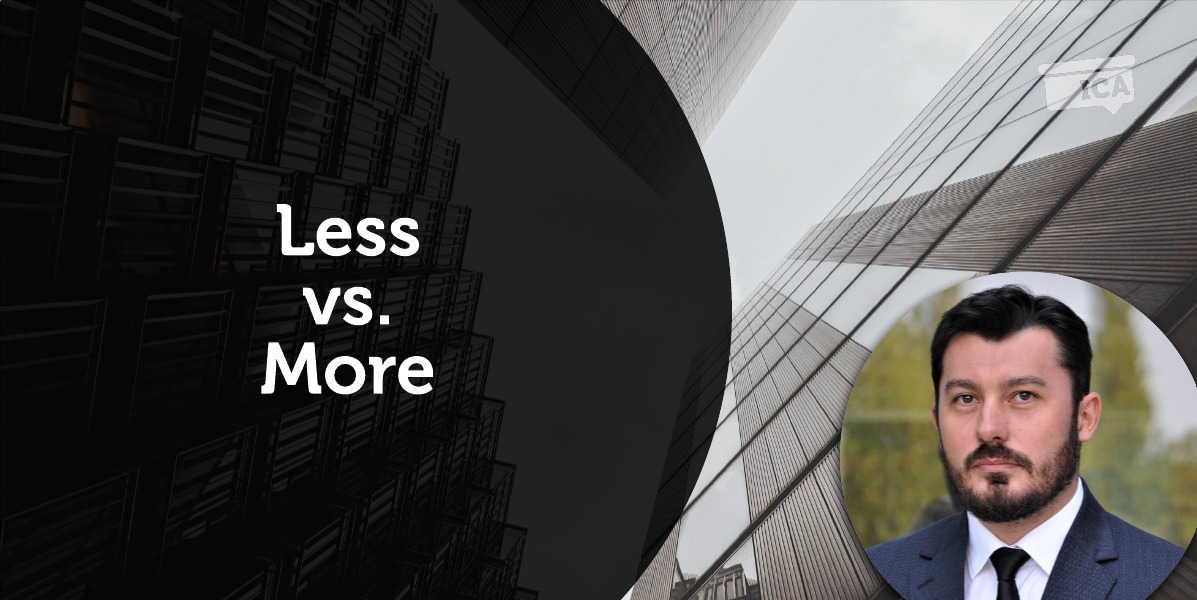A Coaching Power Tool Created by Dragomir Lulian
(Business Coach, ROMANIA)
This can be interpreted also as Doing more with less
Constantin Brancusi, Bird in Space, 1925–1926, relevant example of the Less is more concept
Simplicity is about subtracting the obvious and adding in the meaningful.— John Maeda
Nowadays most people want more: money, goods, friends, appreciation on social media, social status, more intense experiences, travelling and the list can continue since they can not have it all individuals often reach a moment in their life when they feel unhappy about not achieving what they think they want.
The power tool will help people to discover their true goal and to become aware that achieving more actually means to work on fewer areas than they initially think off, and that the trick is to identify the areas which bring them more value.
People will become aware that higher satisfaction and results can be obtained if they focus their energy on aspects and actions which are meaningful for them rather than doing more actions or stretching more things in their life.
Pareto Principle or 80/20 Rule
Each people has a finite amount of energy and resources and in order to become more effective in reaching his/her goals s/he can use the Pareto Principle or 80/20 Rule.
The 80/20 rule is one of the most helpful concepts for life and time management. Also known as the Pareto Principle, this rule suggests that 20 per cent of your activities will account for 80 per cent of your results. It was named after, the Italian economist Vilfredo Pareto, back in 1895. He noticed that people in society seemed to divide naturally into what he called the “vital few,” or the top 20 per cent in terms of money and influence, and the “trivial many,” or the bottom 80 per cent.
Later, he discovered that virtually all economic activity was subject to this principle, in that 80 per cent of the wealth of Italy during that time was controlled by 20 per cent of the population.
We can take Pareto’s 80/20 rule and apply it to almost any situation. Understanding the principle is essential to learning how to prioritize your tasks, days, weeks, and months.
It is proven that 20% of the resources/effort/actions/skills brings 80% of the results, therefore people should focus identifying the areas which are in the top 20% and develop them to achieve better results, rather than focusing on the areas which bring them smaller satisfaction.
Choice and happiness
Barry Schwartz discusses the significance of common research methods that utilize a happiness scale. He sides with the opinion of psychologists David Myers and Robert Lane, who independently conclude that the current abundance of choice often leads to depression and feelings of loneliness. Schwartz draws particular attention to Lane’s assertion that Americans are paying for increased affluence and freedom with a substantial decrease in the quality and quantity of community. What was once given by family, neighbourhood and workplace now must be achieved and actively cultivated on an individual basis. The fewer areas of focus and options to choose the happier the individual will become.
Less is More in architecture and design
Less is more saying, first popularized by minimalist architect Ludwig Mies van der Rohe, which has been transformed into a platitude by advertisers, TV shows, and even corporate America as it right-sizes people out of their livelihoods (“We’ll have to learn to do more with less around here.”). This can be used for people having different anchors.
Owning less stuff, focusing on fewer tasks, and having less in the way has given us more time, more freedom, and more meaning in our lives. Working less allows us to contribute more, grow more, and pursue our passions much more.
Having more time causes less frustration and less stress, more freedom adds less anxiety and less worry, and more meaning in our lives allows us to focus far less on life’s excess in favour of what’s truly important.
Simplicity also connotes the clarity of concept and ideas. When you’ve stripped something down to its essence, you’ve brought forth the most essential parts of what you are trying to showcase and communicate.
The ability to simplify means to eliminate the unnecessary so that the necessary may speak. Hans Hoffman
A tip to practice less is more is to use restraint; choose every element wisely, and distil down to what’s fundamental and necessary, the 80/20 Rule can be helpful if you evaluate the outcome.
Simplify the subject matter and communicate effectively. And as Albert Einstein so wisely said, if you can’t explain it to a six-year-old, then you don’t understand it yourself.
Coaching application:
As a coach, I will use the tool to raise awareness on key values and beliefs and shift the client into a positive state of mind which will bring them the clarity of making the right choice.
To simplify and narrow the choices the 80/20 rule can be used.
Below is a list of questions to be used in different moments of the coaching conversation
To help the client reach a deeper focus:
What is essential for you in all of these?
What would like to do more?
What would you like to focus on?
What is underneath all that effort?
What is your gut telling you is the way forward with that?
When the client has a positive energy shift when telling about some actions, we can use to raise his awareness of this:
How do you feel when doing this?
What makes this important for you?
What value is this binging to you?
When the client discusses things which brings him low energy levels:
How is this aligned with your mission?
What would you differently about this?
How does this help you with achieving your goal?
To empower the client in the planning and empowering phase
How could you trust your gut on this?
